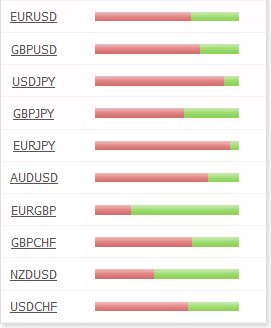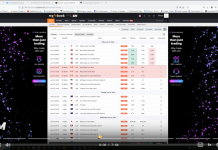What Are the Top Market Analyses Methods in Forex Trading?
There are various methods traders usually use to analyze the market as they anticipate significant moves. The technique a trader chooses depends on some factors such as their trading style and even personal preferences.
It’s always wise to keep your method of analysis as simple as possible; doing so can quickly help you to identify and access profitable trading opportunities.
Let’s explore some of the most popular forex trading analyses methods.

1. Fundamental Analysis
Fundamental analysis takes into consideration a forex currency’s interest rates. The method focuses on the state of affairs of a country which is under a microscope. Such elements as the interest rates, employment rates, GDP, inflation, political environment, and other economic indicators are closely monitored and evaluated.
In this case, an analyst intensely scrutinizes the behavior of base currency. For instance, if you are trading in EUR/USD,( base and quote currencies ) with base currency as the EURO, the emphasis of your analysis is on the Eurozone countries.
Higher interest rates are usually a sign of stability of a coin, which then leads to more investment. Traders who use fundamentals are usually on the alert for news from any of the countries under observation. They can monitor the overall health of the economies of these areas to know how to stake their trades.
How You Can Apply Fundamental Analysis To Your Trade
Traders can use a county’s interest rates or GDP, or any other economic indicator, to get more in-depth insight into the strength/weakness of a currency.
For instance, if the UK’s interest rates are high, it’s evident that its money is also doing equally well on the world market. It’s a sure deal that the value of the currency is high, which also leads to more traders buying it.

2. Technical Analysis
Technical analysis is one of the most commonly used methods in forex trading. It comprises manual and automated analysis systems. In a manual technique, the trader examines technical indicators and then interprets the accrued data to decide whether or not, to buy or sell an asset.
An automated system involves the use of software to help you read the signals. You can train the software through certain sequences so that eventually, it gives you the exact signals. These indicators can then guide you in making the ultimate sell/buy decisions.
A trader using this method can examine patterns of price history and then compare times and places to see if the same trends are going to be repeated. Founded on such data, they can predict the correct market entry and exit positions.
How You Can Apply Technical Analysis To Your Trade
Repeated price patterns of the past can be a great indicator of similar price actions soon. You can use it to either sell/ or buy your asset based on the past price indicators. You can also use the same price signals to either enter or exit

3. Sentiment Analysis
This method centers on the market direction, where most traders are heading at any specific time. It mainly relies on the move of the overwhelming majority. If at all majority of traders predict that the Euro is going bullish, it merely means that the same currency is going in uptrend motion with higher prices expected.
Sentiment allows you to know that a large number of traders has bought a particular asset. Very soon, these same traders would want to sell the currency. As such, you expect a reversal trend within no time. This helps you to make the ultimate market entry decision.
Conclusion
Fundamental, technical, and sentimental remain popular methods of analyses in forex trading. Reasons for preference vary from individual to individual. But it largely depends on how successful these techniques are in predicting market direction.
Short-term traders can especially benefit from technical analysis because they can quickly access real-time quotes. However, if you can readily access news reports and authoritative articles, then fundamental analysis can benefit you as well.
















